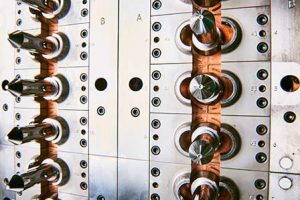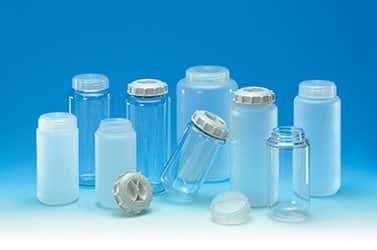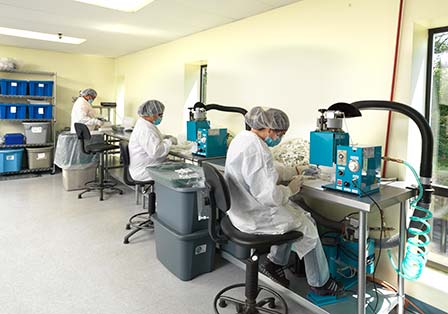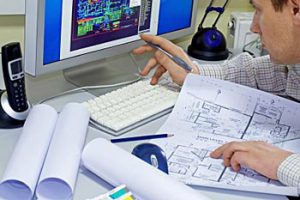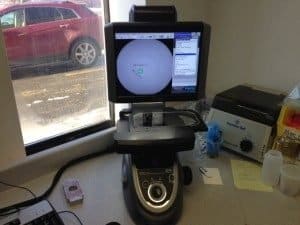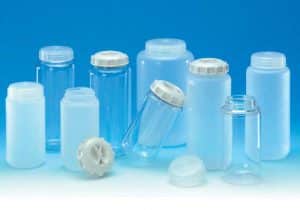Injection molding is a manufacturing process that produces plastic injection molds from both thermoplastic and thermosetting polymers. Over the past several decades the method has proven to be the most cost-effective and best way for mass production of high-quality products with complicated shapes and is ideally suited for the production of medical devices.
Precision-machined injection molds constructed of metal alloys are ideal for producing high volumes of plastic parts. Injection molding offers high tolerances, mass duplication, material selection, low labor costs, minimal scrap losses, and finished parts with little or no assembly.
Nevertheless, there are many considerations and a more than a few questions that companies and inventors alike should ponder and ask in selecting an OEM for your medical device. Here are 5 to consider:
Is my medical device part moldable?
In a nutshell, “Yes!” BMP invests in its capital equipment and infrastructure constantly, to offer our customers advanced, state-of-the-art technology for the injection molding of plastic medical parts. Plastic has a low melting point, is highly malleable, and can be molded easily into basic or complex forms. That malleability also increases the fabrication and production of parts and pieces. The size of the parts, high strength-to-weight ratio, limited post-treatment processes, and the durability, combine to make cost-effective high-quality medical devices. However, as advanced as our injection molding technology is, it’s only as good as the mold design itself. Often times the part design does not lend itself to a product that is easily molded, and that is where our engineers can step in and provide advice on how to maintain functionality of the part and in many cases, make improvements on the design.
What if the design I need is custom?
In many regards, as an OEM, all medical device parts produced at BMP are custom injection molds or dies, to be specific. The injection molding dies must be custom designed and built to withstand the rigorous output and production schedule for tens of thousands of pieces over the life of the product. Most molds are made of pre-hardened metal alloys such as steel or aluminum. BMP’s engineering team has expert Mold-Masters 1 and 2 to assist our customers. We provide medical device design consultation from concept to final product.
Can the OEM manufacturer meet tight deadlines?
Innovation and information are the keys to staying ahead of the competition in the production of medical devices. To be sure, there are no corners to be cut in the manufacture of medical devices. BMP has the expertise of OEM medical processes and equipment to make the transition from concept to manufacturing easily and quickly. Once the validation process for your product is successfully completed, we have the internal capabilities and expertise to ensure rapid transition. We use state of the art injection molding machines and advanced robotics. The finished product is a high-quality medical component. As technology improves and advances, we stay current, move forward with the latest equipment, and provide our customers with productive, cost-effective, and efficient high-speed manufacturing.
Who makes the mold and the molding parts?
BMP has decades of experience in injection molded medical devices. We have Mold Master 1 and 2 levels of expertise, as well as expert tool makers and mechanics, on our engineering staff. We apply methods, strategies, and techniques of injection molding and utilize decoupled molding processes to achieve greater process capacity for our customers. Our engineering team works hand-in-glove with our customers at every stage to ensure the mold design meets their expectation and satisfaction.
What is the right price for OEM medical device injection molding?
BMP is an experienced and seasoned OEM that delivers high-quality manufactured medical devices for our customers. In order to stay ahead of the competition, we are well aware that getting the right price for your medical device within the right timeframe is not only a primary concern of our customers, but a motivating factor in choosing us as their medical device OEM. We strive to meet those expectations and want to be that OEM. Nevertheless, we also adhere to the old adage, “You get what you pay for.” When it comes to offering our customers the “right” price, our philosophy is straightforward: innovative and advanced medical device manufacturing is more than a process. It’s a sound investment in the present and future success of your company and ours.
All medical devices sold in the United States are regulated by the U.S. Food and Drug Administration (FDA). More specifically, any medical device manufactured, repackaged, relabeled, and/or imported by any company or firm to sell in the U.S. has to meet FDA regulations. The FDA states that a Class I medical device, as well as Class II and III, are “an instrument, apparatus, implement, machine, contrivance, implant, in vitro reagent, or other similar or related article, including a component part or accessory” that’s recognized as a pharmaceutical or supplement, intended as a diagnoses, cure, or preventive treatment of a disease, with the intention to affect the structure of a human or animal body. The range of medical devices regulated is immense. Such things as pacemakers, cardiovascular stents, respiratory ventilators, surgical trays, breast implants, diagnostic tests (e.g., pregnancy tests, blood glucose tests, etc.) or relatively simple devices such as tongue depressors, patient scales, and elastic bandages need FDA approval. Regulatory policy for medical devices follows a three-tiered classification system.
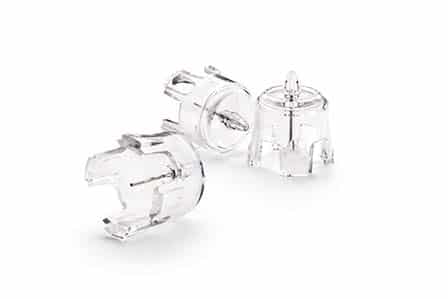
They are, simply, Class I, II, and III. Though the policy is straightforward enough, there are challenges. The FDA has classified around 1,700 different generic types of devices. These are grouped into 16 medical panels, which are then assigned to one of the three regulatory classes to determine the level of control necessary to assure the safety and effectiveness of the device. What then, determines if your medical device is Class I, II, or III? The answer is risk. Each medical device is classified by the risks associated with the device. The higher numbered class, the greater the regulatory control, which further defines the regulatory requirements for a general device type. Classification is determined not only by what risk the device poses to the patient and/or the user, but also the intended use of the device along with any specialized indications for its use. For example, a scalpel may have the intended use to cut tissue of a patient, but a manufacturer may have a specialized scalpel specifically designed to make incisions in the cornea.
Here then, are the differences between the different medical device classes:
Class I Medical Devices
A Class I medical device are those devices that have a low to moderate risk to the patient and/or user. Today, 47% of medical devices fall under this category and 95% of these are exempt from the regulatory process. If a device falls into a generic category of exempted Class I devices, a premarket notification application and FDA clearance is not required before marketing the device in the U.S. However, the manufacturer is required to register their establishment and list their generic product with FDA. Examples include enema kits, elastic bandages, manual stethoscopes, and bedpans.
Class II Medical Devices
Class II medical devices are those devices that have a moderate to high risk to the patient and/or user. 43% of medical devices fall under this category. Most medical devices are considered Class II devices. Examples of Class II devices include powered wheelchairs and some pregnancy test kits.
Class III Medical Devices
Class III medical devices are those devices that have a high risk to the patient and/or user. These devices usually sustain or support life, are implanted, or present potential unreasonable risk of illness or injury. They represent 10% of medical devices regulated by the FDA. Examples of Class III devices include implantable pacemakers and breast implants. We hope this was helpful. BMP Medical is an FDA approved original equipment manufacturer of medical devices. In order to ensure approval, as part of our validation services, we advise and assist clients in helping them understand the distinctions between the different medical device classifications.
Medical manufacturing companies know the consequences of failing to adhere to FDA (The U.S. Food and Drug Administration) regulations can have severe repercussions. One glance at the U.S. Department of Justice and the U.S. Department of Health and Human Services joint annual report on health care fraud and abuse control shows approximately $3.3 billion in judgments and settlements collected in the fiscal year 2016.
The Food, Drug, and Cosmetic (FD&C) Act gave the FDA authority to conduct inspections at medical device manufacturing facilities. On a practical level, in general, the FDA’s inspection selection process is primarily driven based on risk. Those companies manufacturing higher risk devices, top the list. Thus, manufacturers of class III devices, newly registered facilities, implantable, life-supporting, and life-sustaining devices, are the primary subjects for inspection.
FDA uses the Quality System Inspection Technique (QSIT) for its inspections, a ‘top-down approach’ to inspecting a manufacturer's QS. QSIT provides different inspectional levels based on the reason for the inspection. In the medical devices industry, QSIT is used by the FDA to assess the firm's QS for compliance with the appropriate regulations and for inspection of domestic and foreign manufacturers of medical devices with the intention commercial distribution within the US.
Medical device companies will most likely face three types of inspections by FDA: a pre-approval inspection, a routine inspection, and a compliance follow-up inspection. The intention is to ensure and protect the public from unsafe products. The three are:
FDA Pre-Approval Inspections
Pre-approval inspections are conducted on all new products. Once an application to introduce a new product to market is submitted, the FDA will make an inspection. A recommendation for approval is determined by inspectors following a site visit.
Rountine Inspections
By law, routine inspections take place every 2 years for class II and class III device manufacturers. Method of inspection follows the guidelines as outlined in the Quality System Inspection Technique (QSIT). Any violations or problems found during a routine inspection, the company would be subject to fines, or quite possibly temporary shutdown of production.
The Follow-Up Inspection
Compliance follow-up inspections are a response to warning letters or significant FDA Form 483 inspectional observations to verify that corrective measures have been taken by the manufacturer as a result of previous inspection violations. A compliance follow-up is conducted to document the correction of violation(s), or note continuing violations, or to take regulatory action.
Medical manufacturing companies can successfully and seamlessly bring compliant medical devices to market by following certain basic steps. Start by implementing a robust regulatory compliance program in-house. Prepare for FDA inspections. Your quality control program must help ensure, monitor and strengthen compliance across your company’s operations. Follow-up on previous inspections and document any corrective actions taken. Data is evidence, so maintain all records and documents. The key is to ensure compliance through documentation. Implement an effective, timely CAPA (Corrective and Preventive Actions) system to identify and address any violations immediately. Finally, make sure your company’s employees have a thorough awareness of FDA inspections and their compliance. You may even perform mock audits occasionally to prepare for inspections.
Reliable and Innovative Medical Manufacturing Companies That You Can Trust
It’s the medical manufacturer’s responsibility to keep abreast of the current FDA regulations as pertains to your company. Stay tuned in by attending conferences or webinars, review professional publications, and whenever there may be a question on compliance, ask for a ruling directly from the FDA.
Being subjected to government actions will consume time and resources for your company. Statutory and regulatory violations can result in injunctions, significant fines, unwanted publicity, even criminal penalties, or consumer and shareholder lawsuits. In this regard, the goal for all medical manufacturers is to maintain FDA awareness and make sure your company stays compliant.
One of the most important phases of a medical product development life cycle is the relationship between your company’s validation expert and the original equipment manufacturer (OEM) of your medical product.
It is the test run for approval and commercialization. The importance of the transition from validation process to manufacturing will determine FDA approval, the timing of delivery to market, keeping costs within budgeted estimates, and the success of your product.
As a contract manufacturer, at BMP Medical, more than just building medical devices, we build relationships with medical device inventors and innovators. We will work with your validation expert to ensure that validation processes through manufacturing are consistently met to produce devices that meet your company’s specifications as well as being awarded FDA approval.
The FDA requires that validation must provide objective evidence and confirmation through examination that user needs and intended uses as stated are fulfilled. In that regard, as your contract manufacturer, we work with your validation expert hand-in-hand to fulfill this requirement by following standard industry protocols. He or she will have complete knowledge of our OEM medical processes and equipment which makes for an easy transition to manufacturing.
The IQ Protocol
The early stage of process validation, i.e., the installation qualification (IQ) protocol, is critical. Validation methods and criteria are established for your medical device, and also to identify and assess the performance characteristics. For example, this is when we verify that the equipment is correctly installed, any or all instruments are calibrated as needed, and the necessary power supply is met.
The OQ Protocol
The next stage of the process validation, i.e., the operational qualification (OQ) protocol, is to focus on the product risk analysis. OQ is intended to identify and greatly lessen the risk of process failure in large part through statistical modeling, mapping systems and analysis of data collected during the IQ stage.
The PQ Protocol
The next stage of process validation is to perform a number of test runs to verify that your system is operating as expected. The performance qualification (PQ) protocol should be viewed as a pilot production phase that should simulate as much as possible the actual manufacturing conditions of your medical device. The PQ should simulate real-world conditions. Typical tests are up to three production runs (or more if necessary). Statistical modeling can be used to determine the desired yield of the production runs.
Other Areas of Process Validation Consideration
Process validation should consider other real-world conditions such as product packaging and labeling. The ability to anticipate unexpected consequences in packaging design could affect the performance of your product. A prototype delivered or carried in a custom-made case for demonstration is most likely not made of the same components as the packaging material. It is not too uncommon for electrostatic discharge (ESD) failures in electronic medical devices to occur because of packaging material, which is why such packaging should be part of the validation process.
Process validation should also anticipate real-world environmental conditions. Depending on your medical device, simulated temperature fluctuations, humidity levels, shock and vibration stress, or corrosive atmospheres, etc., should be part of the process validation. Unexpected environmental encounters during shipment, handling, and installation most likely will exceed unexpected encounters during actual use. It is best that the validation expert address this issue during the process validation in conjunction with the OEM.
In its decision-making, the FDA relies not only on sound, objective science by medical device inventors and innovators, but a solid foundation for their product development and manufacturing. Process validation is not just an important step, but required by the FDA to receive approval of your medical device. Our role in process validation at BMP Medical is to provide medical device inventors and innovators with the necessary tools to measure the product’s performance with efficiency and accuracy, and to adhere to protocols at all points in the process to ensure an easy transition for FDA approval and the successful commercialization of your device.
Deciding on the ideal medical contract manufacturer (CM) can be a difficult process, as there are many aspects to consider. Medical device CMs play a critical role in the medical device manufacturing process for original equipment manufacturers (OEMs) whether it's a need for casting and molding, R&D design, or custom packaging. As a medical instrument company looking for the right medical CM to outsource to, you need to know what will determine a successful partnership.
High-Quality Manufacturing with ISO 13485 Certification
A high-quality system alongside the essential credentials, such as ISO 13485 and MedAccred, as well as having a risk mitigation plan in place is invaluable to OEMs. Having these essential certifications hold CMs to certain requirements that keep them consistently meeting regulatory standards as well as satisfying their customers’ needs. It also means that CMs with these credentials have invested the time, effort, and money to ensure that their quality systems are equivalent or exceed others in their field. Quality is often one of the most important factors in any decision regarding medical devices, so choosing a CM with all the essential accreditations, FDA compliance, and quality focus will save you both time and money in the long run.
A Medical Contract Manufacturer That is a Partner
Great customer service makes all the difference no matter what industry you are in but when medical devices are concerned, responsiveness and open communication are critical. The ability to speak to a real human, not an operator (and the right person to answer your question at that!) will make a CM stand out among their competition. After making initial contact with the business development team, ask to take a tour of the facility and at that time discuss some specific questions with the engineering team. At this juncture, their expertise, as well as their method of communication to your inquiries, will indicate how business will operate throughout the partnership.
Geo-Location and Company Size
Location, location, location. It may seem cliche but the geo-location of the CM will significantly affect the overall cost and quality of the final product as well as the company’s responsiveness. In today’s business environment large companies typically are unwilling to make changes in their process or to client projects in order to accommodate the customer’s requirement. While there may be specific situations in which outsourcing overseas may be the best fit your OEM company, choosing a domestic company that will move quickly with new projects, meet volume requirements and provides on-time delivery will offer the flexibility and reliability needed for a great long-term partnership.
Cleanroom Capabilities
Why should an OEM select a medical device contract manufacturer that has cleanroom capabilities? Simple. CMs with cleanroom capabilities have a lower risk of contamination when devices are fabricated in cleanrooms because all product is treated as if it were a sterile product. Devices made in cleanrooms tend to be better quality and manufacturers often have a higher skill level and diligently take care of the devices throughout the manufacturing process.
Good Contract Manufacturers Will Work With You
It is critical that a CM has a clear understanding of what the OEM’s overall goals are and that they are willing to work with them to better understand and achieve those goals. A CM that can do that, will ultimately be the best fit. Price will always be an important factor in choosing the right CM for your project but other criteria play an equally significant role in forming a long-term and profitable partnership. If you are interested in requesting a sample of BMP Medical’s work or you want to start a conversation with one of the experts, we would love to hear about your project.
There are many benefits to updating processes and technology. While the ”old” way of doing things is comfortable, it is not always the best for the customer. At Biomedical Polymers, we pride ourselves on staying on the cutting edge when it comes to manufacturing plastic products for research and medical diagnostic labs. Recently, we made some critical upgrades to our already successful reverse engineering services.
For years, it was our reverse engineering policy, to give parts directly to one of our highly skilled designer. They would start with a dimensional check, followed by copying the part using the available materials. While the process did serve our customers well, we knew there had to be a better way. So, after thoroughly researching alternative processes, we settled on the use of a CT scanner.
Often referred to as industrial computed tomography scanning, the process relies on x-rays to get a complete internal and external look at an object much like the CT scanners in hospitals and doctors offices. Currently, we are partners with a firm that scans new parts allowing us to get a dimensional outline, which we then turn into a 3D drawing. As you might imagine, the use of CT technology makes for a much more precise result. It also frees up our staff of designers to focus more on materials and other reverse engineering variables.
If you want to learn more about Biomedical Polymers’ use of CT scanning in our new reverse engineering services, please contact us today!
All of us here at Biomedical Polymers wanted to reach out before the end of the year to wish our clients a very happy holiday season, and a fantastic New Year!
We have been taking some time over the holiday for our annual shutdown. We are making sure that all or our machines and equipment for manufacturing plastic or disposable medical supplies are well-oiled and ready for 2014! All of the general maintenance that we can’t do while our doors are open (machine tooling, updating the shop floor, installing our new machines), we will be working on until January 2nd when we re-open.
As we look forward to 2014, we will also be doing a lot of tooling modifications so that we can increase efficiency. We are also hoping to add more personnel to help increase our capacity, so keep an eye out for future job postings!
In the meantime, we want to take a moment to say thank you to our clients. You have made our year one to remember and we can’t wait to work with you again in the New Year.
Everyone at Biomedical Polymers is thrilled about the addition of a new state-of-the-art automated digital measuring system. As a leading maker of plastic consumables for BioMed graphic 1 research and medical diagnostic labs, we are always looking for ways to improve our already high-quality manufacturing processes.
In this case, our new automated system is attached to an existing optical comparator. As you may or may not know, an optical comparator is a device that allows a technician to inspect finished products for impurities. With the new automated system, we are able to pre-program parts and dimensions. This, in turn, allows our optical comparator to read each product and give it a pass/fail rating in less than 3 seconds! Before this update, this task took a significantly longer time as it was done manually.
Though our new automated digital measuring system is only a month old, we have already put it to good use. In fact, we are currently qualifying a new mold for a well-known BioMed graphic 2laboratory industry client. As we become even more familiar with the technology, everyone at BMP believes that it will improve our internal quality control and data recording capabilities past their already high ratings.
If you want to learn more about how automation is making our optical comparators faster and more accurate, please visit our website or contact one of BMP’s experts today!
Innovation distinguishes between a leader and a follower
-Steve Jobs
It does not matter what industry you are in, innovation is the only way to survive and prosper. In our world, the world of plastic products for research and medical diagnostic labs, innovation is not about replacing plastics about making plastics safer for human contact and our planet’s environment.
When it comes to people’s health, which is obviously the point of the medical and research fields, the past decade has seen a strong move away from the more trouble-filled plastics like PVC and Polystyrene (PS) to ones like HPDE and PET(E). According to all current studies, these safer plastics do not to leach any chemicals that are suspected of causing cancers or disrupting hormones.
These same innovative plastics also play a big role in the attempts to save our environment. We are a long way from the days when plastics were the opposite of Green. Materials like PET(E)s and polyethylene are becoming easier to recycle, and having second lives as car bumpers, toys, and fill for jackets. In addition, we are on the brink of a biodegradable plastics boom, which finds us close to mass-producing plastics that dissolve in seawater or ones made from animal byproducts.
As plastic engineering specialists, we are making every effort to stay one step ahead of these dizzying changes. We understand that the world is going to demand more, not less, plastics. The challenge becomes creating materials that retain the highly desired traits of classic plastic, but breakthrough plastic’s daunting environmental and safety limitations. If this was not enough change to deal with, BMP also recognizes that mold technology must keep pace. But, like Steve Jobs’ said, innovation is all about leading and not following. At BMP, we are up to the challenge and we plan on leading for a long time to come.
At Biomedical Polymers, we put all of our focus on one thing: medical molding. Unlike other plastic injection molders, it’s not something we also do…it is all we do. We have a singular, laser-like focus on being the best medical molder in the industry.
This high level of commitment is incredibly important when handling plastic consumables for research and medical diagnostic laboratories. Due to the constant risk of contamination, there is no room in the medical molding world for unsanitary or chaotic production facilities. Plastics that contain endocrine disrupting chemicals like BPA or PBDEs must never enter a facility that works with medical polymers. Unlike some of our competitors, Biomedical Polymers’ state-of-the-art facilities are 100% dedicated to the production of medical products. Our onsite ISO Class 8 cleanroom for both manufacturing and packaging add yet another layer of security in the battle against contamination.
Everyone at Biomedical Polymers constantly strives to meet or exceed the industry’s good manufacturing practices (GMPs). As well, all of our clients, big and small, receive the same comprehensive customer service and quality assurance. We guarantee that all of our products will fully conform to your needs, expectation, and requirements. Thanks to our singular focus on medical injection blow molding it is a guarantee we feel strongly we can meet each and every day.
If you are looking for a plastic injection molder who truly understands the unique challenges of medical molding and can guarantee you the highest levels of quality and respect, we could not imagine a better place that Biomedical Polymers.
